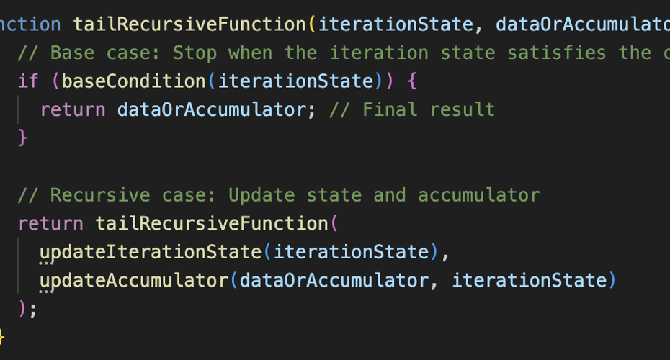Dev
4w
178

Image Credit: Dev
Converting Loops into Recursion: Templates and Tail Recursion Explained
- Recursion is a technique where a function calls itself to solve smaller instances of the same problem. To convert loops into recursion, first identify the Iteration State, Define the Base Case, Perform the Current Iteration’s Work, and finally, Recursive Call. Tail recursion is a special form of recursion where the recursive call is the last operation in the function. Tail-recursive functions can be optimized by reusing the current stack frame instead of creating a new one for each call.
- Recursive solutions can eliminate boilerplate code, especially for complex problems such as tree traversals and graph searches. Each recursive call adds to the stack, making recursion less efficient than loops. Not all JavaScript engines support tail-call optimization, limiting the practical use of tail recursion in certain environments.
- Using examples for summing an array and the countdown timer, the article provides templates for general recursion and tail recursion code. The templates help convert loops into recursive functions. The benefits of tail recursion include stack optimization, which reduces memory usage, and efficiency when tail-call optimization (TCO) is supported by the JavaScript engine.
- The examples for tail recursion in summing an array and factorial are quicker and more efficient than their non-tail recursive counterparts because they can also match the performance of iterative loops. Moreover, tail recursion can reduce memory usage and prevent stack overflow compared to non-tail recursion.
- Limitations of recursion include stack overflow from deep recursion or non-tail recursion and performance overhead from recursive calls adding to the stack. Writing recursive functions helps solve complex problems but can be limited by the lack of support for tail-call optimization in the runtime environment.
- The article explains that mastering these concepts makes it easier to solve problems and write code flexibly and efficiently. Recursion is considered a necessary part of a developer's toolset, allowing them to express solutions more clearly while eliminating boilerplate code for complex problems.
Read Full Article
10 Likes
For uninterrupted reading, download the app